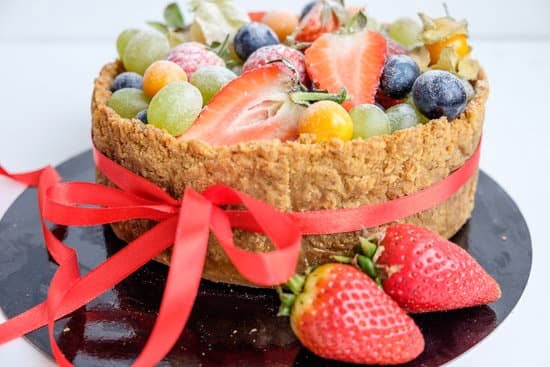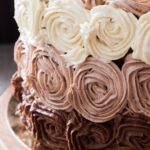Are you looking to elevate the visual appeal of your cakes? One way to do so is by learning how to make sugar decorations for cakes. Sugar decorations not only add an artistic touch to your baked creations but also allow you to personalize and customize your designs. From simple shapes like flowers and hearts to intricate lace patterns and 3D figures, sugar decorations offer endless possibilities for enhancing the aesthetic appeal of your cakes.
To get started with making sugar decorations, you will need a few essential tools and materials such as fondant, food coloring, a rolling pin, and shape cutters. These items will be instrumental in creating beautifully crafted sugar decorations that will take your cake decorating skills to the next level. Once you have gathered the necessary supplies, the next step is learning how to properly prepare the fondant for making decorations.
In this article, we will walk you through a step-by-step guide on preparing fondant for creating various shapes and designs. From basic shapes like flowers and leaves to more advanced techniques such as intricate borders and 3D figures, we will cover everything you need to know about making stunning sugar decorations for your cakes.
Whether you’re a beginner or an experienced baker looking to expand your decorating skills, mastering the art of creating sugar decorations will allow you to add a professional finish to your cake designs.
Tools and Materials Needed
Creating stunning sugar decorations for cakes requires the use of specific tools and materials to achieve professional-quality results. Essential items needed include fondant, food coloring, a rolling pin, and shape cutters. Fondant is the primary material used for making sugar decorations as it provides a smooth and pliable medium for creating intricate designs.
Food coloring is essential for adding vibrant colors to the fondant, while a rolling pin is necessary for evenly rolling out the fondant to the desired thickness. Shape cutters come in various shapes and sizes, allowing decorators to create specific designs with ease.
When working with fondant, it’s crucial to have a clean work surface and tools to prevent any unwanted marks or blemishes on the decorations. Additionally, having cornstarch or powdered sugar on hand can help prevent sticking when rolling out the fondant.
Parchment paper is also useful for preventing the fondant from sticking to surfaces and tools. It’s important to gather all these tools and materials before starting the process of making sugar decorations for cakes to ensure a smooth and efficient decorating experience.
In addition to the basic tools mentioned above, other helpful items include a non-stick silicone mat for rolling out fondant, a fine dusting pouch filled with cornstarch or powdered sugar for dusting surfaces, and a sharp knife or small spatula for cutting out shapes or trimming edges. By having all these tools and materials ready beforehand, decorators can focus on honing their skills in creating beautiful and intricate sugar decorations without interruptions or delays in their creative process.
Preparing the Fondant
When it comes to making sugar decorations for cakes, one of the essential steps is properly preparing the fondant. Fondant serves as the base material for creating a wide variety of shapes and designs, making it crucial to get this step right. To start, you will need a few key tools and materials including fondant, food coloring, a rolling pin, shape cutters, and a non-stick surface for working with the fondant.
To prepare the fondant for making decorations, begin by kneading it until it becomes smooth and pliable. This helps to remove any air bubbles and ensures that the fondant is easy to work with. Once kneaded, add small amounts of food coloring until you achieve your desired shade. Remember that a little goes a long way with food coloring, so start with a small amount and gradually add more as needed.
After achieving the desired color, roll out the fondant using a rolling pin on a clean, non-stick surface. The thickness of the rolled fondant will depend on the type of decoration you are making – thinner for delicate designs and thicker for 3D figures or sculpted decorations. With these basic steps in mind, you are now ready to move onto shaping and creating your sugar decorations for cakes.
| Tools and Materials | Essential Items |
|---|---|
| Fondant | Main material used for making sugar decorations |
| Food Coloring | Added to fondant to achieve desired colors |
| Rolling Pin | Used to roll out the fondant |
| Shape Cutters | For cutting out various shapes from the fondan |
Creating Basic Shapes
Preparing the Fondant
Before diving into creating the actual shapes, it’s important to ensure that the fondant is properly prepared. Kneading the fondant until it is smooth and pliable is crucial for successful shaping. Additionally, dusting your work surface with powdered sugar or cornstarch will prevent sticking and make it easier to roll out the fondant to the desired thickness.
Making Flowers
Flowers are a popular choice for cake decorations, and they can be made in various styles such as roses, daisies, or cherry blossoms. To create simple flower shapes, start by rolling out small balls of fondant for the center of the flower, then shape additional petals by flattening small pieces of fondant and cutting them into petal shapes using a small knife or a special flower cutter. Assemble the petals around the center to form a beautiful floral decoration.
Shaping Leaves and Hearts
Leaves and hearts are versatile shapes that can complement a wide range of cake designs. For leaves, use a leaf-shaped cutter or gently mold elongated pieces of green-tinted fondant into leaf shapes. To make hearts, simply roll out red or pink fondant and cut out heart shapes using a cookie cutter. These basic shapes can add charm and elegance to cakes for various occasions.
With patience and practice, mastering these basic fondant shapes will give you the confidence to explore more intricate designs and create stunning sugar decorations for your cakes.
Advanced Techniques
Creating intricate sugar decorations for cakes can take your baked creations to the next level. From delicate lace patterns to intricate 3D figures, these advanced techniques can elevate the visual appeal of any cake. In this section, we will explore some of these advanced techniques and provide step-by-step instructions on how to achieve stunning results.
Lace Patterns
Lace patterns add a touch of elegance and sophistication to any cake. To create lace patterns with fondant, you will need a lace impression mat or a silicone lace mold. Roll out the fondant to the desired thickness and press the lace impression mat or mold onto the fondant to create a beautiful lace design.
Carefully remove the impression mat or mold to reveal the intricate pattern. Trim the lace to fit the desired area of the cake and gently adhere it using a small amount of water or edible glue.
3D Figures
Creating 3D figures with fondant allows you to add personalized touches and unique decorations to your cakes. To make 3D figures, start by shaping the fondant into the basic form of the figure using your hands or specialized sculpting tools. Once you have achieved the desired shape, add details such as facial features, clothing, or accessories using food-safe sculpting tools and edible markers. Allow the 3D figures to dry and harden before placing them on top of your cake.
Intricate Borders
Intricate borders can add a finishing touch to your cakes, creating a polished and professional look. Use various shape cutters, piping tips, or embossing tools to create decorative borders with fondant. You can also incorporate additional elements such as pearls, edible glitter, or dragees for added embellishment.
Mastering these advanced techniques for creating sugar decorations will give you more creative freedom when decorating cakes, allowing you to showcase your artistic skills and impress your guests with beautifully adorned desserts.
Adding Color
When it comes to creating sugar decorations for cakes, adding color is an important step in making your creations visually stunning. Here are some tips and tricks for coloring the fondant and creating vibrant decorations:
1. Choose the Right Food Coloring: When coloring fondant, it’s important to use gel or paste food coloring instead of liquid food coloring. Gel and paste colors are more concentrated, which means you can achieve vibrant shades without altering the consistency of the fondant. Additionally, gel and paste colors are available in a wide range of shades, allowing you to mix custom colors with ease.
2. Kneading the Color: Once you’ve chosen your desired gel or paste food coloring, it’s time to knead the color into the fondant. Start by adding a small amount of color to the fondant and then knead it until the color is evenly distributed.
Add more color as needed to achieve your desired shade. Keep in mind that the color may deepen as the colored fondant sits, so it’s best to start with a lighter shade than you ultimately want.
3. Mixing Custom Colors: To create custom colors for your sugar decorations, experiment with mixing different shades of gel or paste food coloring. For example, mixing equal parts of red and yellow will create orange, while combining blue and red will produce purple. Keep track of your color combinations so that you can replicate custom shades in future projects.
By following these tips and tricks for coloring fondant, you can create vibrant sugar decorations that add a pop of color to any cake.
Remember to be patient when kneading in the colors gradually since achieving a specific hue may require several additions until reaching your preferred shade. With practice and experimenting with different combinations, you’ll soon become adept at creating an array of stunning colored sugar decorations for your cakes.
Incorporating these techniques into your cake decorating skills will take your creations to a new level; make them stand out from store-bought ones every time.
Tips for Handling and Storing
Sugar decorations can truly elevate the visual appeal of a cake, adding an extra touch of beauty and elegance. To ensure that your sugar decorations are not only visually stunning but also long-lasting, it is important to handle, store, and preserve them properly. Here are some valuable tips for handling and storing your sugar decorations to maintain their quality and integrity.
First and foremost, when handling sugar decorations for cakes, it is essential to do so with clean hands and on a clean surface. Any dirt or residue can easily transfer onto the delicate decorations, affecting their appearance. When picking up and placing sugar decorations on a cake, try using small tongs or toothpicks to prevent any damage or distortion.
Storing sugar decorations requires careful consideration to protect them from humidity, dust, and direct sunlight. It is best to keep them in an airtight container at room temperature in a cool, dry place. It’s important to avoid refrigerating fondant decorations as the moisture can cause them to become sticky and lose their shape.
In addition to proper handling and storage, preserving sugar decorations involves protecting them from fading or becoming brittle over time. If you want to preserve your creations long-term, consider using edible varnish or clear piping gel as a protective coating. This will help maintain the vibrant colors and delicate details of the decorations.
By following these tips for handling, storing, and preserving your sugar decorations, you can ensure that they remain in pristine condition until they are ready to be placed on a beautiful cake. Taking care of your sugar decorations not only preserves their visual appeal but also adds an extra layer of craftsmanship to your confectionary creations.
Applying the Decorations
Once you have created beautifully crafted sugar decorations for your cakes, it’s time to learn how to apply them to achieve a professional finish. Whether you are adding simple fondant shapes or intricate 3D figures, the way you apply the decorations can greatly impact the overall look of the cake.
Here are some tips and techniques for applying sugar decorations on cakes:
1. Prepare the cake: Start by ensuring that your cake is properly iced and ready for the decorations. Smooth out any imperfections on the icing to provide a clean canvas for your sugar decorations.
2. Plan your design: Before applying the sugar decorations, it’s important to have a clear plan for how you want them to appear on the cake. Whether you’re creating a pattern, border, or centerpiece, having a plan will ensure that your design looks cohesive and visually appealing.
3. Apply strategically: When placing the sugar decorations on the cake, be strategic about their placement. Use gentle pressure to adhere them to the icing, making sure they are secure but not squished into the cake.
By following these steps and taking care in how you apply your sugar decorations, you can achieve a professional finish that will impress anyone who sees or tastes your beautifully decorated cake.
Once mastered this skill set one can start selling their confectionary delights via online platforms like Brokerr.com reaching out more clientele than ever before by opening virtual stores. Get yourself connected with professionals at Brokerr.com and level up your sales game.
Conclusion
In conclusion, mastering the art of creating sugar decorations for cakes can truly elevate the visual appeal of your baked creations. By following the step-by-step guide provided in this article, you can learn how to make intricate and vibrant sugar decorations that will impress your friends, family, and customers.
Whether you are just starting out or looking to expand your skills, the tools, techniques, and tips discussed here will set you on the path to becoming a pro at sugar decorations.
The importance of sugar decorations in enhancing the overall look of cakes cannot be overstated. Beautifully crafted fondant flowers, intricate lace patterns, and vibrant 3D figures can turn a simple cake into a stunning masterpiece.
Not only do these sugar decorations add an aesthetic flair to your cakes, but they also showcase your creativity and attention to detail as a baker. Knowing how to make sugar decorations for cakes opens up a world of possibilities for customizing and personalizing your baked goods.
As you continue to hone your skills in creating sugar decorations for cakes, remember to have fun and experiment with different designs and color combinations. With practice, patience, and perseverance, you’ll soon be able to create show-stopping confectionery works of art that will leave everyone marveling at your talent. So go ahead and get started on making your own sugar decorations – it’s an exciting journey that will take your cake decorating skills to new heights.
Frequently Asked Questions
How to Make Edible Cake Decorations at Home?
Making edible cake decorations at home can be a fun and creative process. One common way to do this is by using fondant or gum paste, which can be shaped and molded into various designs like flowers, shapes, or figurines.
How to Make Candy Cake Decorations?
Candy cake decorations can add a pop of color and sweetness to any cake. To make them at home, you can use different types of candy like gummy bears, M&Ms, or even rock candy. These can be arranged in patterns or used to create eye-catching designs on your cake.
What Are Sugar Decorations Made Of?
Sugar decorations are typically made of a mixture of confectioners’ sugar, water, and sometimes meringue powder. This mixture is often used to create royal icing, which can then be piped into various shapes and designs before allowing it to harden into decorative elements for cakes and other baked goods.

Welcome to our cake decorating blog! My name is Destiny Flores, and I am the proud owner of a cake decorating business named Cake Karma. Our mission is to provide delicious, beautiful cakes for all occasions. We specialize in creating custom cakes that are tailored specifically to each customer’s individual needs and tastes.





